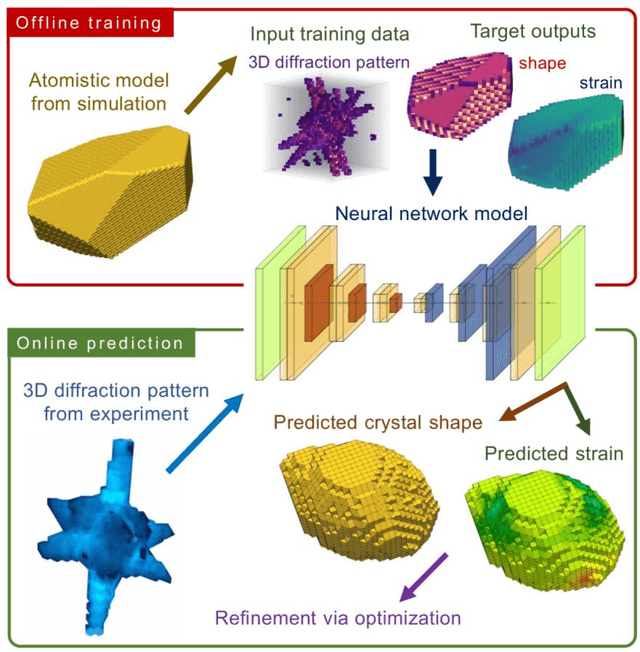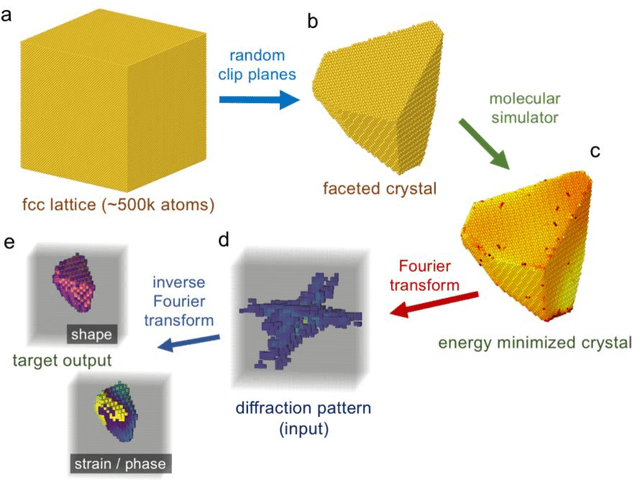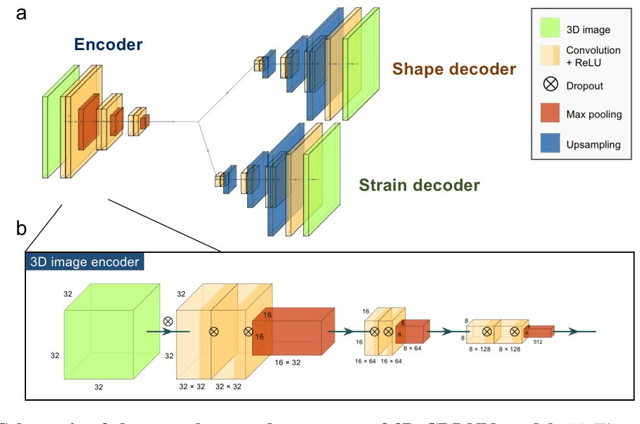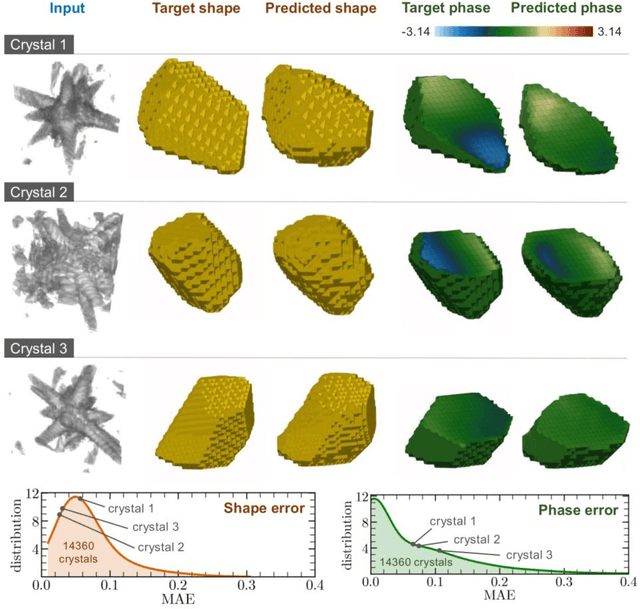Stephan Hruszkewycz
Dark-Field X-Ray Microscopy with Structured Illumination for Three-Dimensional Imaging
May 21, 2024



Abstract:We introduce a structured illumination technique for dark-field x-ray microscopy optimized for three-dimensional imaging of ordered materials at sub-micrometer length scales. Our method utilizes a coded aperture to spatially modulate the incident x-ray beam on the sample, enabling the reconstruction of the sample's 3D structure from images captured at various aperture positions. Unlike common volumetric imaging techniques such as tomography, our approach casts a scanning x-ray silhouette of a coded aperture for depth resolution along the axis of diffraction, eliminating any need for sample rotation or rastering, leading to a highly stable imaging modality. This modification provides robustness against geometric uncertainties during data acquisition, particularly for achieving sub-micrometer resolutions where geometric uncertainties typically limit resolution. We introduce the image reconstruction model and validate our results with experimental data on an isolated twin domain within a bulk single crystal of an iron pnictide obtained using a dark-field x-ray microscope. This timely advancement aligns with the enhanced brightness upgrade of the world's synchrotron radiation facilities, opening unprecedented opportunities in imaging.
Real-time 3D Nanoscale Coherent Imaging via Physics-aware Deep Learning
Jun 16, 2020



Abstract:Phase retrieval, the problem of recovering lost phase information from measured intensity alone, is an inverse problem that is widely faced in various imaging modalities ranging from astronomy to nanoscale imaging. The current process of phase recovery is iterative in nature. As a result, the image formation is time-consuming and computationally expensive, precluding real-time imaging. Here, we use 3D nanoscale X-ray imaging as a representative example to develop a deep learning model to address this phase retrieval problem. We introduce 3D-CDI-NN, a deep convolutional neural network and differential programming framework trained to predict 3D structure and strain solely from input 3D X-ray coherent scattering data. Our networks are designed to be "physics-aware" in multiple aspects; in that the physics of x-ray scattering process is explicitly enforced in the training of the network, and the training data are drawn from atomistic simulations that are representative of the physics of the material. We further refine the neural network prediction through a physics-based optimization procedure to enable maximum accuracy at lowest computational cost. 3D-CDI-NN can invert a 3D coherent diffraction pattern to real-space structure and strain hundreds of times faster than traditional iterative phase retrieval methods, with negligible loss in accuracy. Our integrated machine learning and differential programming solution to the phase retrieval problem is broadly applicable across inverse problems in other application areas.
 Add to Chrome
Add to Chrome Add to Firefox
Add to Firefox Add to Edge
Add to Edge